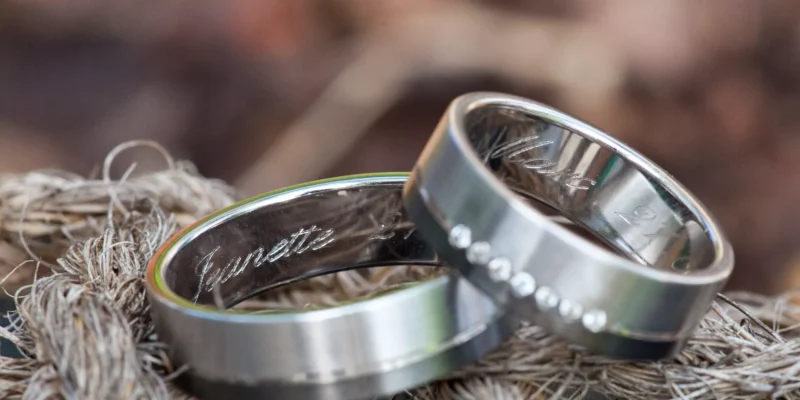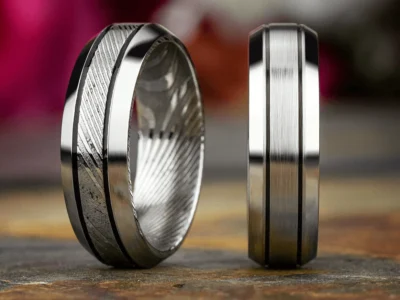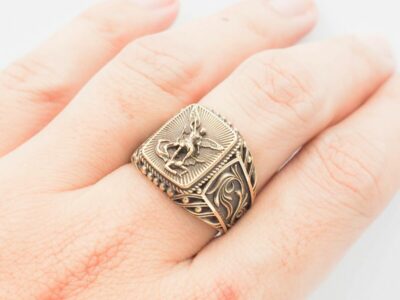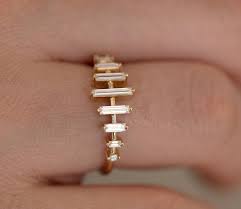Stainless Steel and Sterling Silver are two popular materials used in various industries, including jewelry making. Stainless Steel is an alloy of iron, carbon, and other elements, known for its strength and corrosion resistance.
On the other hand, Sterling Silver is a precious metal alloy consisting of 92.5% silver and 7.5% other metals, often copper, which adds durability and strength. While both materials have their unique characteristics and applications, they offer distinct advantages when it comes to durability, maintenance, appearance, and value.
Table of Contents
Stainless Steel vs Sterling Silver: Composition
Stainless Steel is primarily composed of iron, carbon, and other elements like chromium and nickel. It is known for its high strength and resistance to corrosion. Sterling Silver, on the other hand, is a 92.5% pure silver alloy mixed with other metals to enhance durability and strength. It retains the lustrous appearance of silver while being more resilient to daily wear and tear.
Chemical composition and characteristics of Stainless Steel
Stainless Steel is primarily composed of iron, carbon, and other elements like chromium and nickel. It is known for its high strength and resistance to corrosion. This material is durable, versatile, and commonly used in various industries due to its exceptional properties.
Chemical composition and characteristics of Sterling Silver
Sterling Silver is composed of 92.5% pure silver and 7.5% other metals, usually copper.
This alloy gives Sterling Silver its lustrous appearance and high durability while still retaining the beauty and elegance of silver. It is known for its resistance to tarnish and its ability to be shaped into intricate designs. Sterling Silver jewelry is also hypoallergenic, making it suitable for those with sensitive skin.
Durability and Maintenance
Durability and resistance to tarnishing are key characteristics of Stainless Steel. It is highly durable and does not easily corrode or tarnish, making it a low-maintenance material. Regular cleaning with soap and water is sufficient to maintain its appearance.
Durability and resistance to tarnishing of Stainless Steel
Stainless Steel is highly durable and resistant to tarnishing. It has excellent corrosion resistance, making it suitable for long-term use. Regular cleaning with soap and water keeps its appearance intact.
Durability and maintenance tips for Sterling Silver
Sterling Silver is a softer metal compared to Stainless Steel, making it prone to scratches and tarnish.
To maintain its durability and shine, it is important to store Sterling Silver jewelry in airtight bags or boxes to prevent oxidation.
Regular cleaning with a soft cloth or silver polishing cloth can help remove tarnish and restore its luster. Avoid exposing Sterling Silver to harsh chemicals, such as chlorine and perfumes, as they can cause discoloration.
Appearance and Versatility
The appearance of Stainless Steel is known for its sleek and modern look. It can be finished in various styles, including polished, brushed, or matte.
Stainless Steel offers versatility as it can be easily molded into different shapes and designs. On the other hand, Sterling Silver is admired for its classic and elegant appearance, often used in high-end jewelry. It can be polished to a brilliant shine and is versatile in jewelry making, allowing for intricate details and designs.
Appearance and finishing options of Stainless Steel
Stainless Steel is known for its sleek and modern appearance. It can be finished in various styles, including polished, brushed, or matte. This versatility allows for a wide range of design options in jewelry and other applications.
Appearance and versatility of Sterling Silver in jewelry making
Sterling Silver is highly valued for its elegant and timeless appearance in jewelry making. Its lustrous white color and shine make it a popular choice for a wide range of designs, from delicate necklaces to statement rings.
Sterling Silver can be easily molded into intricate shapes, allowing for the creation of intricate and detailed pieces. Whether it’s a classic pendant or a modern bracelet, Sterling Silver offers endless possibilities in the world of jewelry.
Pricing and Value
Pricing and Value: When it comes to pricing, Stainless Steel tends to be more affordable compared to Sterling Silver. However, Sterling Silver holds a higher market perception and value due to its precious metal status and timeless appeal.
Price range and affordability of Stainless Steel products
Stainless Steel products are known for their affordability. They are generally more budget-friendly compared to Sterling Silver. Stainless Steel jewelry and accessories come in a wide range of prices, making them accessible to a wider audience.
Value and market perception of Sterling Silver items
Sterling Silver items are highly valued in the market due to their precious metal content and timeless appeal. They are often associated with luxury and elegance, making them a popular choice among consumers and collectors alike.
Conclusion
In conclusion, both Stainless Steel and Sterling Silver have their own unique properties and characteristics. It ultimately comes down to personal preference and the specific requirements of the item or piece of jewelry.
Comparison of Stainless Steel and Sterling Silver
When comparing Stainless Steel and Sterling Silver, it is important to consider their composition, durability, appearance, and pricing.
Stainless Steel is known for its durability and resistance to tarnishing, making it a popular choice for everyday items. On the other hand, Sterling Silver has a classic and elegant appearance, but requires more maintenance to prevent tarnishing.
In terms of pricing, Stainless Steel is generally more affordable, while Sterling Silver is considered more valuable in the market. Ultimately, the choice between the two materials depends on personal preference and the specific requirements of the item or piece of jewelry.
Factors to consider when choosing between the two materials
When choosing between Stainless Steel and Sterling Silver, factors to consider include the desired durability, maintenance needs, desired appearance, pricing, and market value. It is important to weigh these factors against personal preferences and the specific requirements of the item or piece of jewelry.







Comments